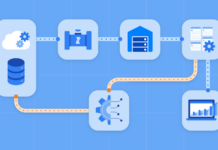You have trusted the advice of your SEO expert and invested a significant amount of money in pay-per-click (PPC) advertising. You are getting a lot of traffic, so that’s the good news. The bad news is that you’re not seeing very many new orders. Could it be that you are a victim of click fraud?
Verifiable click fraud examples are everywhere. It is such a prevalent crime that the chances of being victimized are pretty good over long periods of PPC advertising. The trick is figuring out that you are being hit. That’s what Fraud Blocker does, by the way. It is software designed to uncover click fraud so that businesses can do something about it.
Here are 5 click fraud examples the folks behind Fraud Blocker say are fairly common:
1. Excessive Clicks from Click Farms

PPC ad publishers only make money when web users actually hit that ad. Unfortunately, there are bad actors in the PPC space more than willing to set up overseas click farms staffed by hundreds of low-paid employees who do nothing but sit behind computer screens all day clicking customer ads. That’s it. It is just click after click after click.
Click farms are usually located in countries with little regulatory oversight and low wages. Operators can hire hundreds of workers for almost nothing. The lack of regulatory oversight allows them to operate their click farms without having to worry about the authorities breathing down their necks. It is the perfect storm.
One way to detect such activities is to monitor IP addresses. Seeing an unusually large number of clicks from the same or similar IP addresses, in a very short window of time, is a strong indicator of a fraudulent activities.
2. Automated Clicks from Click Bots

Bad actors might appreciate the click farm concept but still have an aversion to running an actual farm. They can do much the same thing with a bot. What is a bot? It is a small app that relies on automation to complete its tasks. Thus, a click bot is a small app designed to do nothing but hitting on PPC ads. These bots are easy to write and deploy.
Click bots are usually deployed through malware. A web user visits a shady website and unknowingly downloads the malware to their computer. Once downloaded, it automatically installs and executes. Now the user has a click bot running in the background. Whenever the computer is up and running, the bot is busily finding PPC ads and hitting them.
Some click bots are delivered through malicious emails that prompt recipients to open contaminated attachments. Opening said attachment accomplishes the same thing. It installs the bot on the user’s computer. Without even knowing it, the user is helping to perpetrate click fraud with a bot that runs in the background.
These first two click fraud examples are arguably the most common means of perpetrating the crime around the world. The remaining three examples are not as common. However, they are just as effective.
3. Clicks from Unseen Ads
There are devious ad publishers who create websites loaded with tiny ads that cannot be seen. The ads are no more than one pixel by one pixel. They are placed very close to legitimate links, encouraging visitors to accidentally click them while trying to follow the links they can actually see.
Perpetrating click fraud via unseen ads takes many forms. One of the more popular forms is known as ad stacking. This is where multiple tiny ads are stacked one on top of another in layers. Rather than a single click hitting a single ad, one will affect every ad in the stack. Ad stacking is a way to rack up hits on multiple ads very quickly.
Imagine a website that is 50% legitimate content and 50% tiny, stacked ads you can’t see. Navigating around that page and clicking legitimate links racks up PPC hits in the background. You have no idea it is happening. And that’s the point. Making the ads so tiny that they cannot be seen is a way to perpetrate scam without taking as big a risk as you would with a click farm or bot.
4. Fraudulent Clicks from Competitors

The next entry among our five click fraud example relates to fraudulent clicks perpetrated by competitors. In other words, company A might launch a brand-new PPC campaign designed to increase market share. Its rival, company B, gets wind of the ad campaign and tasks multiple employees with getting online and clicking company A’s ads multiple times per day.
You might wonder how this type of click fraud helps company B. It boils down to depleting company A’s PPC budget without actually converting any of those into paid customers. The employees tasked with clicking the ads have no intention of buying anything. They are just clicking. Every click results in company A being charged.
If company A gets charged a ton but doesn’t see any conversions, they will eventually run out of money for that ad campaign. That’s the whole idea. Competitors seek to shut down rival ad campaigns by running marketing budgets dry.
5. Encouraging Accidental Clicks

Finally, bad actors take advantage of smaller mobile screen sizes to encourage accidental clicks. How? By placing ads at screen locations that they know users are likely to tap. They count on the fact that a person’s aim is not always accurate. It is an easy problem to exploit considering the size of most phone screens.
Through strategic ad placement, bad actors can encourage phone users to inadvertently tap on ads they otherwise would not have tapped. Whether or not the user actually visits the website in question and buys something is of no matter. All that matters is that the user taps the ad.
These five click fraud examples illustrate the very real problem that is click fraud. Until concrete steps are taken to defeat fraudsters, they will continue doing what they do. In the meantime, they will also be ruining PPC budgets.









